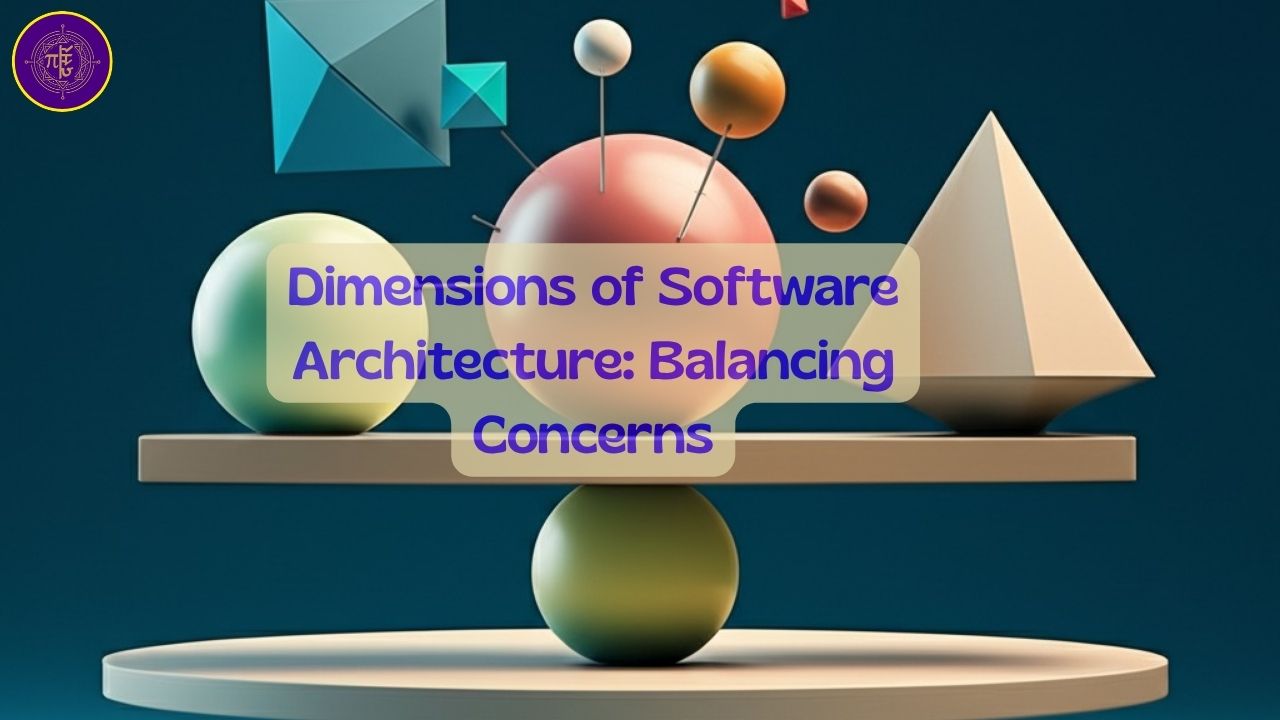
Dimensions of Software Architecture#
Call these “Architectural Concern Categories” or “Dimensions of Software Architecture” or “Axes of Architectural Design” or “Architectural Concepts” it is your choice. Here I am referring them as Dimensions of Software Architecture. They are extremely important for any software solution creator or software product maker. Any solution creator or product maker should be aware of these concepts/ dimensions and choose them carefully. In this article we are trying to understand these dimensions. Once you choose a particular architecture for some requirements there are multiple ways or algorithms or techniques or protocols to implement that. I am aware there is some overlapping between these terms.
Execution Models#
How your code runs: in sequence, in parallel, or in reaction to events.
- Synchronous: Step-by-step, blocking (
print(read_file())) - Asynchronous: Non-blocking (
await fetch()) - Concurrent: Tasks progress together (
threading,asyncio) - Parallel: Truly simultaneous (
multiprocessing) - Event-driven: React to events (
onclick, Node.js). System behavior is determined by events or messages. - Reactive : A model where the system reacts to inputs (data/events) as they come in.
- Blocking / Non-blocking : Whether a thread waits (blocks) or not when performing an operation (like I/O).
- Multi-threaded : Uses multiple threads of execution.
- Single-threaded : Only one thread handles all operations (e.g., Node.js with event loop).
- Actor model : Independent actors communicate via message passing (e.g., Erlang, Akka).
- Coroutine-based : Lightweight cooperative threads (e.g., Python asyncio, Go routines).
Communication Patterns#
How components talk to each other.
- Request-Response: Client-server (
HTTP REST) - Pub-Sub: Send and forget (
Kafka,MQTT) - Message Queue: Tasks queued (
RabbitMQ) - Streaming: Continuous flow (
WebSocket,gRPC stream) - RESTful APIs : HTTP-based stateless communication.
- gRPC : High-performance RPC using Protocol Buffers.
- WebSockets : Bi-directional communication over a single TCP connection.
- Polling / Long Polling : Repeated or extended HTTP requests to simulate real-time communication.
- Shared Memory : Threads/processes access common memory space (risky but fast).
- Remote Procedure Call (RPC) : Directly invoke methods across networks.
- Signal / Slot : Observer-based pattern used in GUIs or reactive systems.
Architectural Styles#
High-level design structure of a system.
- Monolithic: All-in-one (
Django app) - Layered: Separate tiers (
MVC,3-tier) - Microservices: Small independent services (
Netflix) - Event-driven architecture: Events trigger behavior (
e-commerce order placed) - Service-Oriented Architecture (SOA) : Services communicate over a network, often with an enterprise service bus (ESB).
- Serverless : Logic is deployed as short-lived functions (e.g., AWS Lambda).
- Client-Server : Traditional model with a requesting client and responding server.
- Peer-to-Peer (P2P) : Every node is both a client and server.
- Hexagonal (Ports & Adapters) : Decouples core logic from external systems via interfaces.
- Clean Architecture : Emphasizes separation of concerns and independence of frameworks/UI.
- Onion Architecture : Similar to Clean Architecture, with concentric layers.
- Microkernel / Plugin : Core system extended via plugins (e.g., IDEs).
- Pipeline / Filter : Data passes through a sequence of processing steps.
- Blackboard Architecture : Components contribute to and draw from a shared data structure.
- CQRS (Command Query Responsibility Segregation) : Separate read and write models.
- Event Sourcing : Store changes as a sequence of events.
- Saga Pattern : Handle long-running distributed transactions.
- Circuit Breaker : Prevent failure propagation in microservices.
- Strangler Fig Pattern : Gradually replace a legacy system.
- Bulkhead Pattern : Isolate failures in one part of a system.
- Sidecar Pattern : Attach helper services to main service (common in service mesh).
Deployment & Runtime Models#
How and where the system runs.
- Containers: Lightweight runtime (
Docker) - Serverless: No server management (
AWS Lambda) - Orchestrated/Cloud-native: Designed for cloud (
Kubernetes) - Edge Computing : Computation close to the data source (IoT, CDN).
Scalability & Availability#
How the system handles load and stays online.
- Load balancing: Distribute requests (
Nginx) - Replication: Data copies (
MongoDB replica set) - Sharding: Split data (
Cassandra) - Auto-scaling: Elastic capacity (
AWS EC2 Auto Scaling) - Horizontal Scaling : Add more machines.
- Vertical Scaling : Add more resources to existing machine.
- High Availability : System remains available despite failures.
Data Handling & Consistency#
How data is stored and kept accurate.
- ACID: Reliable DB transactions (
PostgreSQL) - BASE: Eventually consistent (
Cassandra) - CQRS: Read/write separation
- Event Sourcing: Store change events (
Kafka log)
Resilience & Fault Tolerance#
How the system recovers from failure.
- Retry: Try again on failure
- Circuit Breaker: Stop failing requests (
Netflix Hystrix) - Fallback: Backup response logic
- Failover : Automatic switching to backup systems.
Security Boundaries#
How the system protects itself and data.
- Authentication: Identity check (
OAuth) - Authorization: Access control (
JWT, RBAC) - TLS/SSL: Encryption in transit
Modularity & Extensibility#
How easily the system can evolve.
- Plugin system: Add-on features
- Inversion of Control (IoC): Framework calls your code (
Spring) - Dependency Injection: Inject components
Observability & Monitoring#
How the system is monitored and debugged.
- Logging: App logs (
loguru,winston) - Metrics: Numbers to track (
Prometheus) - Tracing: Flow tracking (
OpenTelemetry)
Dev & Release Lifecycle#
How the system is built, tested, and released.
- CI/CD: Automated build/deploy (
GitHub Actions) - Blue-Green Deployment: Zero downtime switch
- Canary Release: Small rollout
Orthogonal Concepts#
- Scalability : Ability to grow with load.
- Resilience : Ability to recover from failure.
- Observability : System visibility through logging, tracing, and metrics.
- Maintainability : Ease of making changes over time.
- Security-by-Design : Security considered from the outset.
- Idempotency : Repeated operations produce the same result.
- Stateless vs Stateful : Whether or not a component retains memory of previous interactions.


Comments: